It is common today that women are photographed sexy and slightly undressed to attract attention to the subject, photographer or both. There is so much of this sort of photography that it has almost become kind of disposable art, with a viewing time of only 1-3 seconds. In the best-case scenario, the model gets a like, and is then replaced with a new photo on the screen with just one swipe.
This is a type of photography that is not questioned. Sometimes I have the feeling that there is little respect for subjects. Aesthetics and beauty should come first. However, the opulence and uniqueness of the pose take priority. I agree with an esteemed-colleague Oliver Roller when I say that ‘equality between men and women has never arrived in portrait photography’.
Every timeless portrait is a work of art, it is a representation of an individual’s personality. In portrait photography, as well as portrait painting, there is an implied agreement that the artist may reveal something about their subject sitting in front of the camera. The aim is to fathom the essence of their personality. The French philosopher Michel de Montaigne once confessed:
“La plus grande chose du monde, c’est de savoir être à soi“, (“The greatest thing in the world is to know who you are and what is in you”.)
In my opinion, Instagram and Facebook are currently not the platforms for this type of personal and authentic portraiture – maybe they will become so in the future – but they are not there now. Portrait photography requires special attention to show respect and depth. The era of high-quality photo magazines and journals is behind us. With exhibitions and print reproductions becoming rarer, the opportunity to present oneself in a dignified manner becomes more difficult.
But what makes a good portrait?
“… two people meet and something has to happen that is bigger than the situation of the two people. The actual mission: an image with staying power. You have to be able to look at it in 10 years and say, that’s how it was back then.”- Jim Rakete.
I find this a very appropriate description.
I also believe that film and the darkroom process create a unique piece – a memory of the shoot and the person being photographed. The film portrait has depth and feeling.
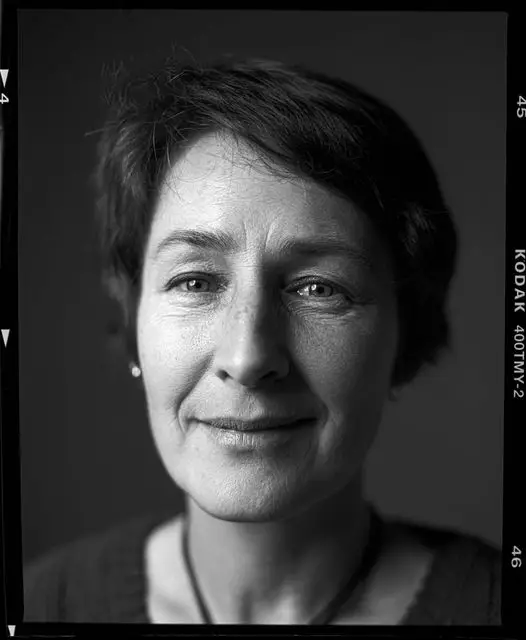
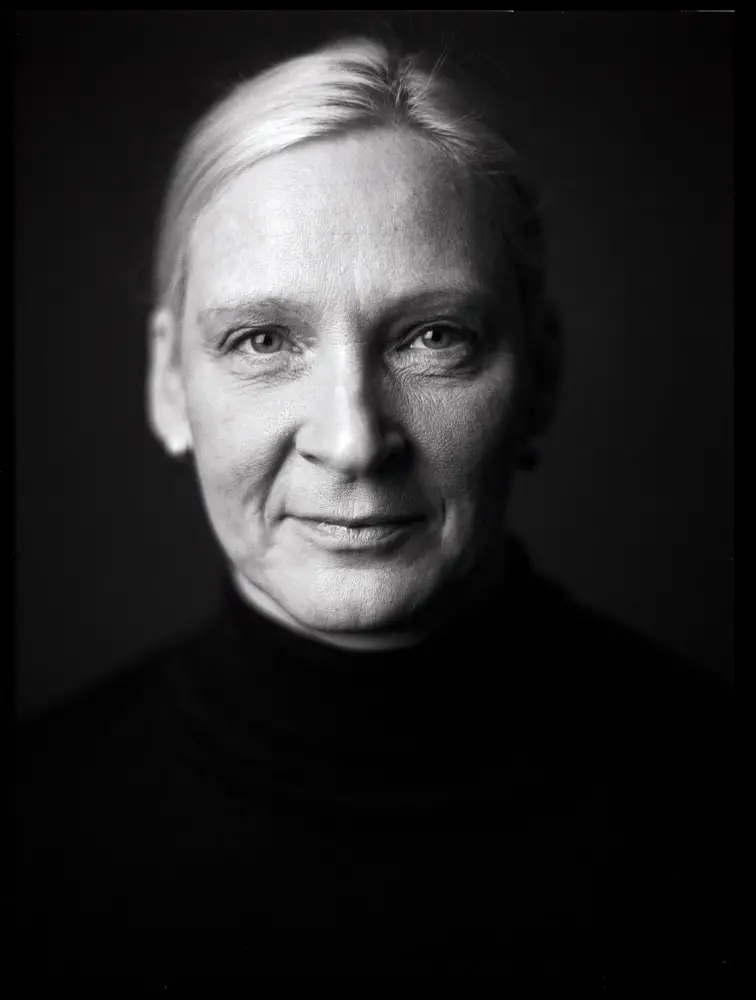
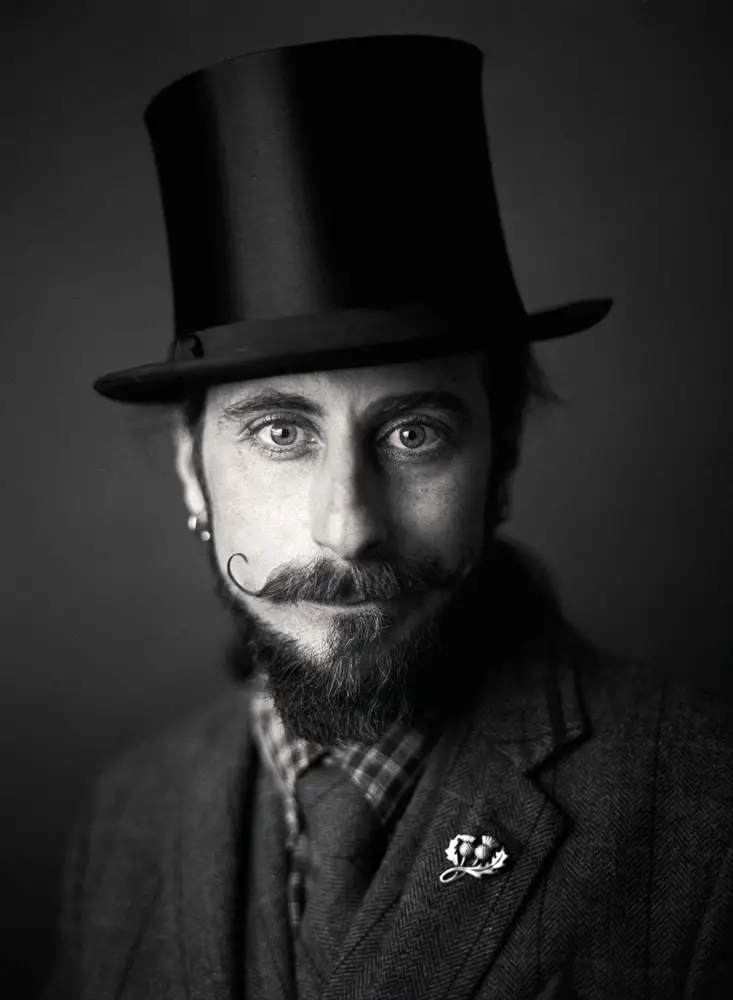
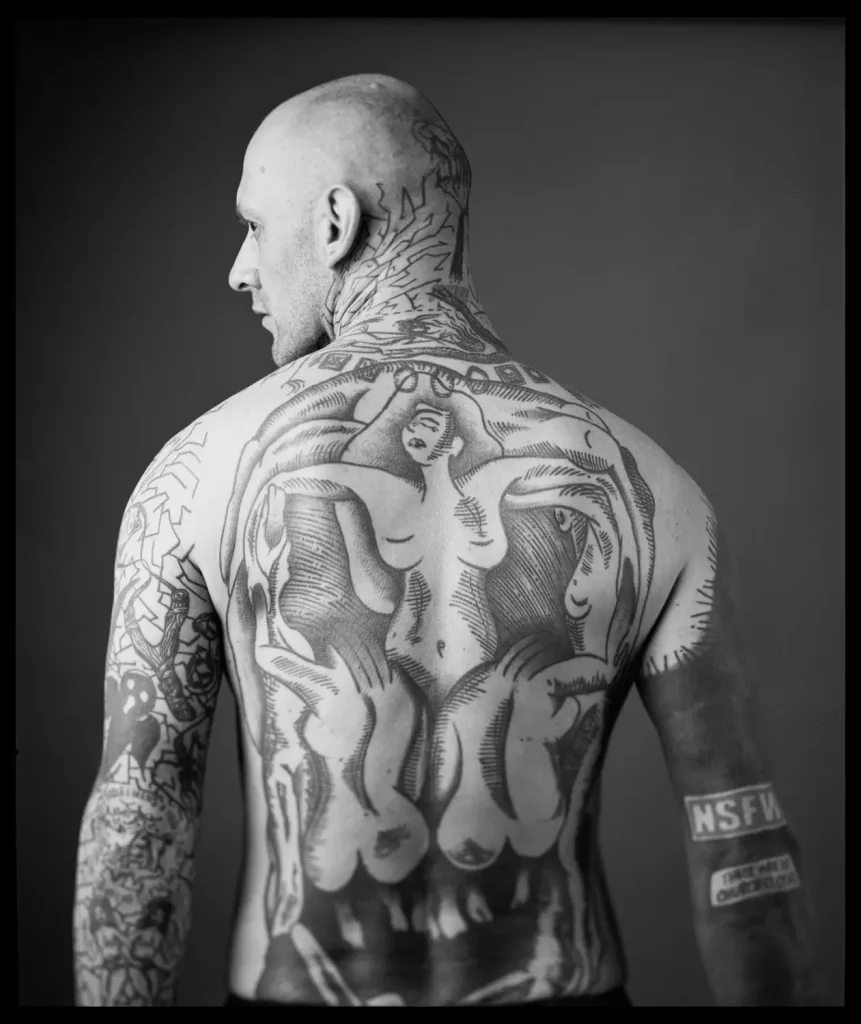
The Demise of the Portrait
Everyone has character traits that surround and radiate from them. In front of a camera many try to pretend to be someone else, to consciously wear an invisible mask. In today’s world it’s popular to be seen laughing in photos. However, in portraits of the past, there was nearly no laughter at all, it was an indication of lower classes to show a broad smile on paintings. Even today we all don’t run around laughing all the time, so why do so many disguise themselves – is it just to please the masses?
It also seems that a lot of young people want to be photographed to make them happy. Are they doing this to make up for some sort of deficit in self esteem given to them by external forces? Or is it through a desire to imitate popular models – do they just wish to become famous?
Photography for social media channels should not be seen as a replacement for therapy. A picture can be liked, this might bring some instant gratification, but the joy also passes quickly. This creates a void that can only be filled through the uploading of another picture. The ‘new and mediocre’ seems to therefore be valued higher than the ‘old and excellent’.
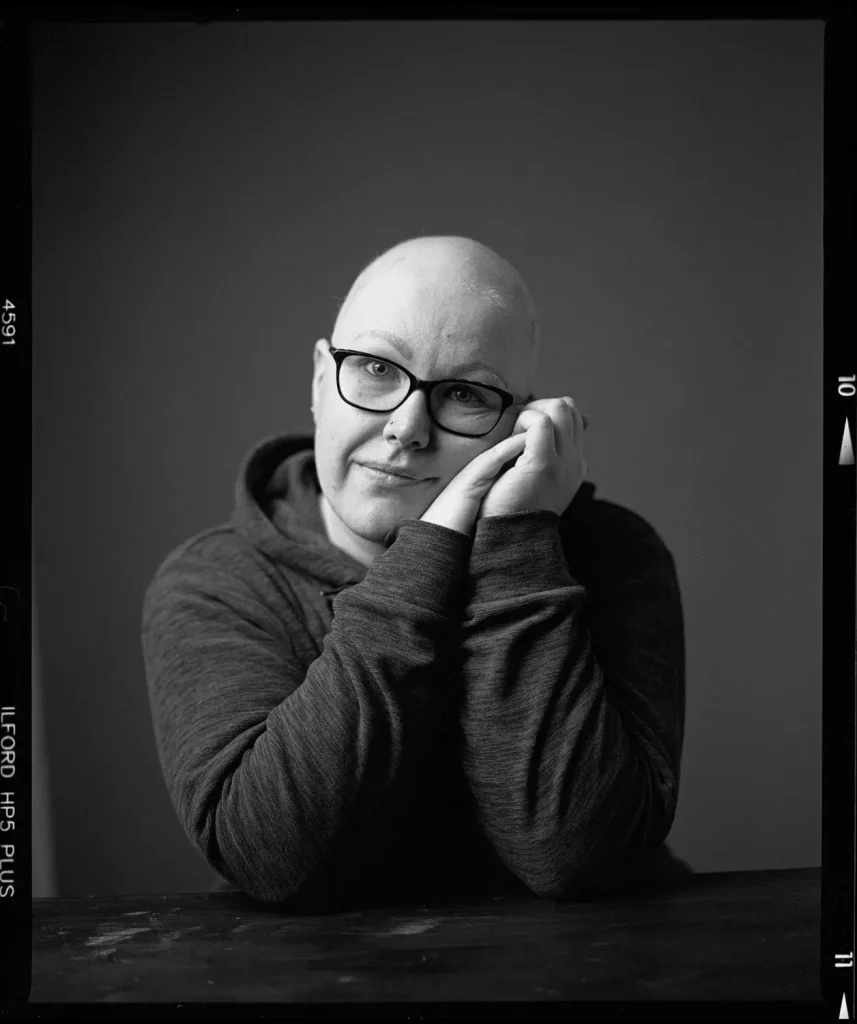
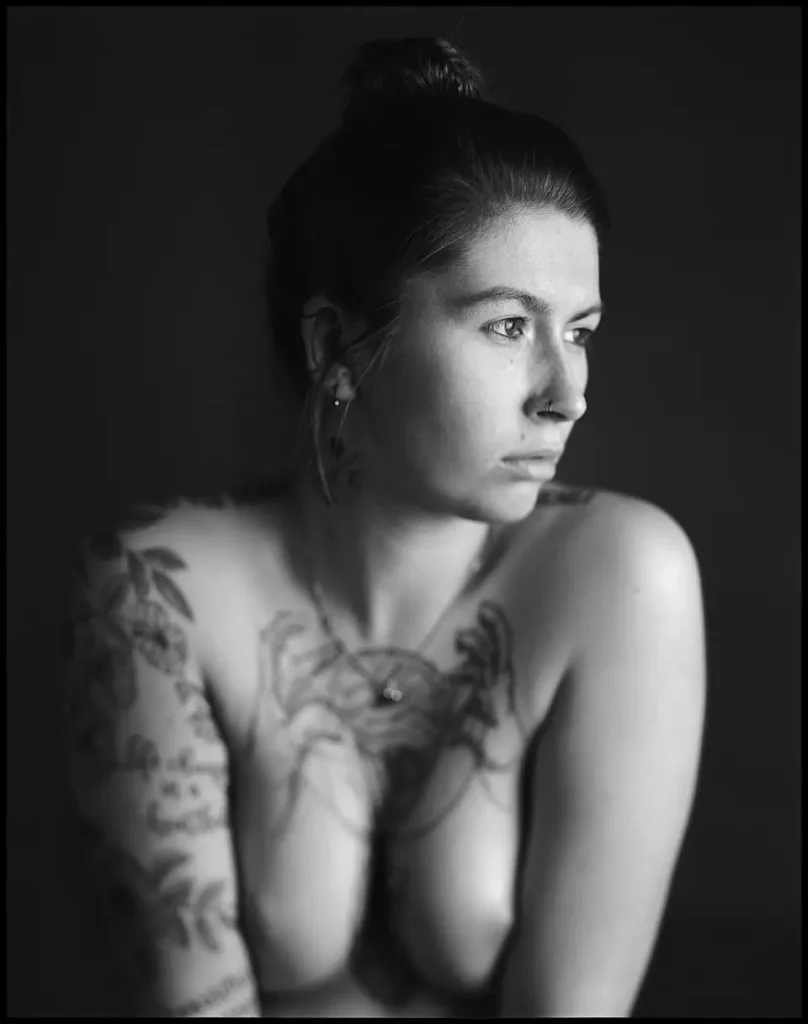
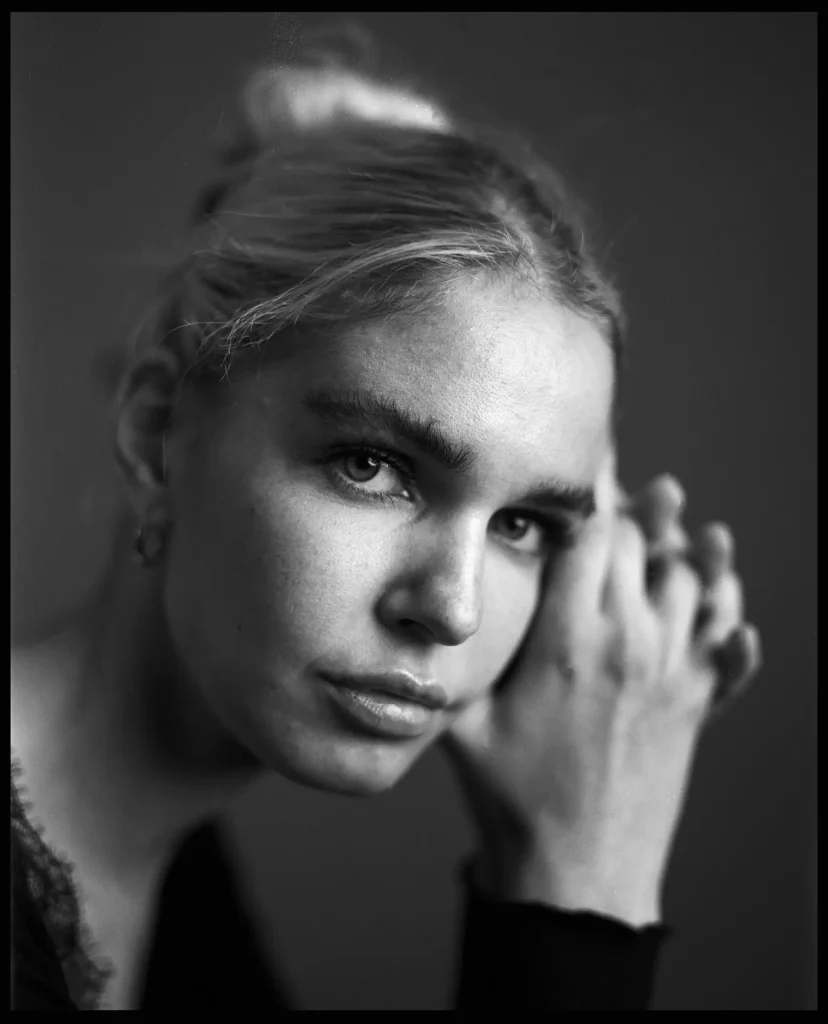
People/Subjects
I am very often asked, “Where and how do you get to know people?” I openly admit that I to am a product of the 21st century. Most contacts arise on Instagram, Facebook groups or other forums. In fact, due to the lockdown in 2020 and 2021, I have lately gotten know very few people outside of the digital sphere.
But, as I mentioned, I like to talk to people to get to know their story and find a way to uncover the personality through an image. Even if it is fashionable to be young and fit, this is not the case for everyone – it is fate that shapes a person and their personality. Either way, it is important to open oneself to this process, as their personality must be visible in the portrait.
I want to give a face and a soul to fateful experiences and even serious illnesses. The fact that I was diagnosed with an illness at an early age, in my case certainly plays a major role in this – I now live with it and learn to deal with it every day. La plus grande chose du monde, c’est de savoir être à soi – encountering this quote now feels almost like a warning. It’s about recognising yourself and not wearing a mask of your choosing.
It is my passion to photograph other people again and again; to get to know them, to translate their stories and their view of their lives into my visual language. This is my intention in portrait photography, I’m not interested in quick snapshots but slow work. I feel this allows me to see how people want to be perceived. How they carry their invisible baggage.
“You are beautiful when you dare to be yourself! The most important thing is to fully express yourself as you are without adapting to strange ideas.” – Master Shunryu Suzuki
People reveal so much through their body language, scars, posture, facial expressions, and gestures, without needing to ever say a word. Learning a language means observing, it means learning and finding a suitable key to open the lock to the soul. This is why I do not photograph models, but personalities and faces that show character and soul – I love authentic portraits.
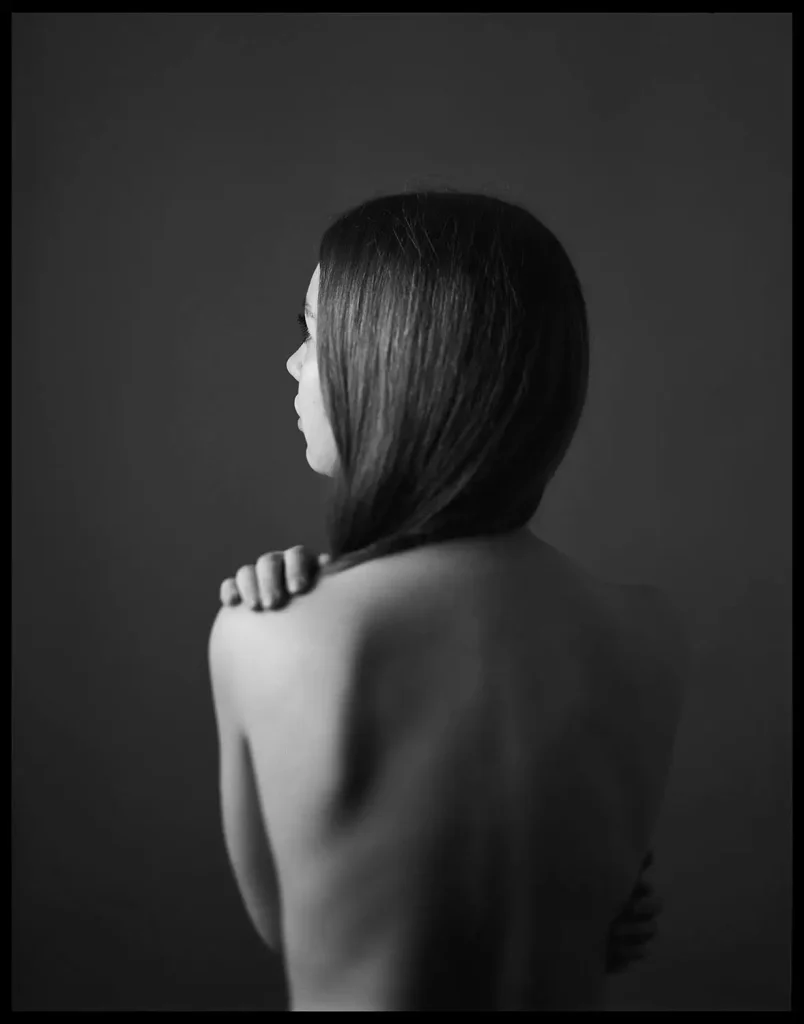
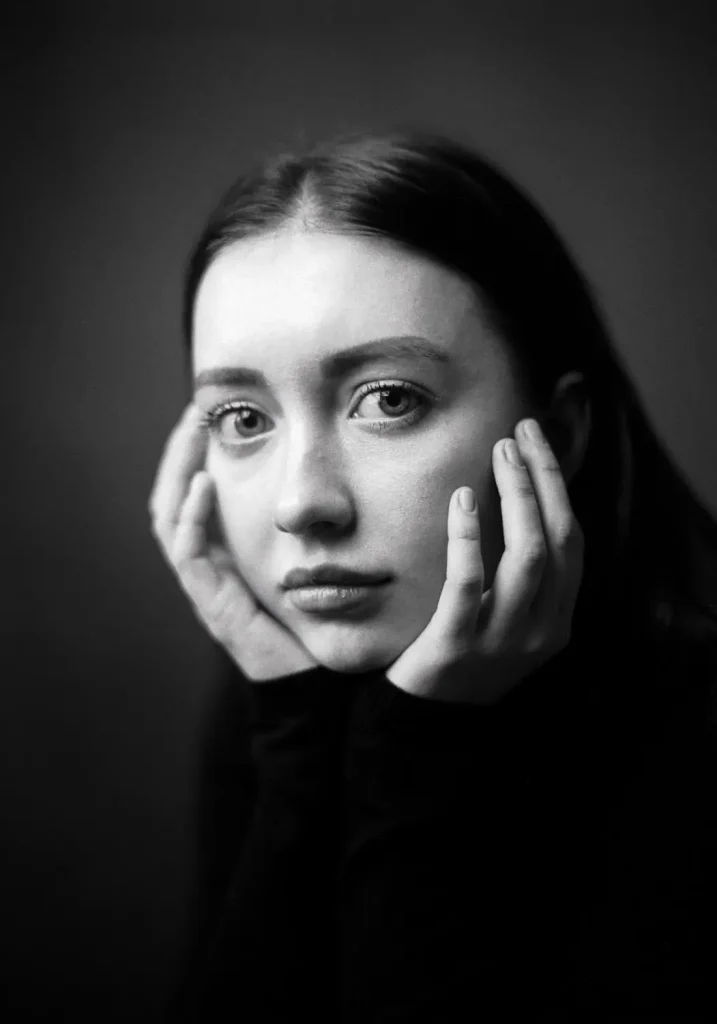
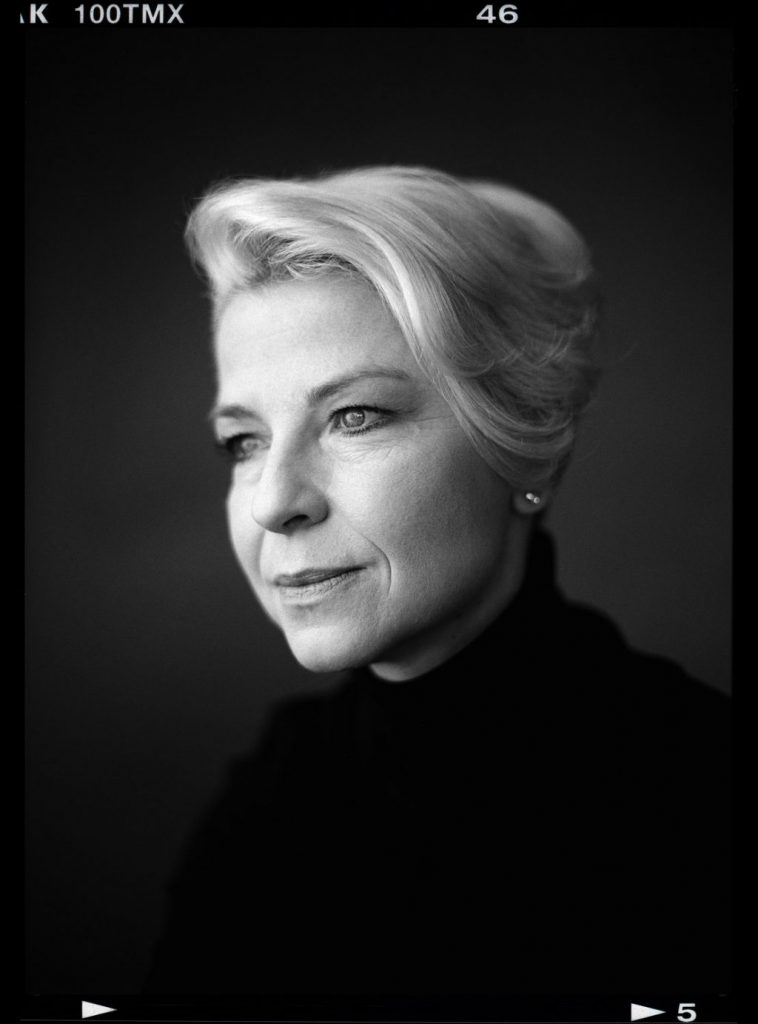
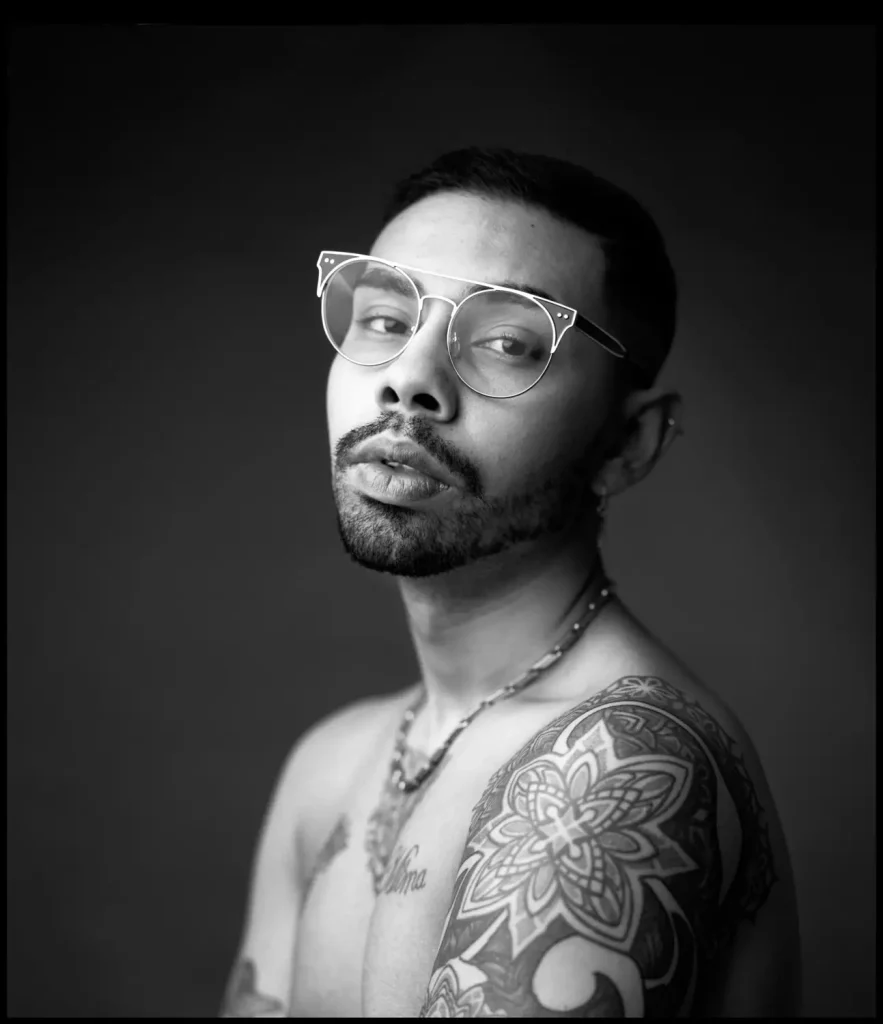
Why Film?
As I already described, I think the world is moving too fast, everything has to be done quickly and nobody has time anymore. Working with analog photography for me means taking the time to enjoy something, to appreciate it, and do it with passion. Like an old record, analog film has this charm. Photos appear warmer and I honestly believe that they subconsciously influence the viewer; the grain, the tonal values, the special black and white cannot easily be imitated digitally, if at all. The mechanical click and the sound of the shutter release on a large format camera give me and my guests a feeling of deceleration and good, manual work.
I am convinced that expressive portraits are often better photographed with large cameras rather than a small camera too. The respect for the film and the size of the camera plays a major role for me; there is a greater focus on the person portrayed than if I were in front of them with a small camera. Therefore, I prefer to shoot people with a medium format camera. I am often asked why I, of all people, use such classic technology. After all, I was born after the Berlin wall came down.
It was the great photographers of our time who inspired me. Jim Rakete who I greatly admire for authentic portrait photography, and for portraits with more character, I am inspired by photographers such as Martin Schoeller and Marco Grob. I want my portrait photography to convey emotions, timelessness and authenticity – I feel I achieve that with the approach I take, and that includes my choice of equipment and media.
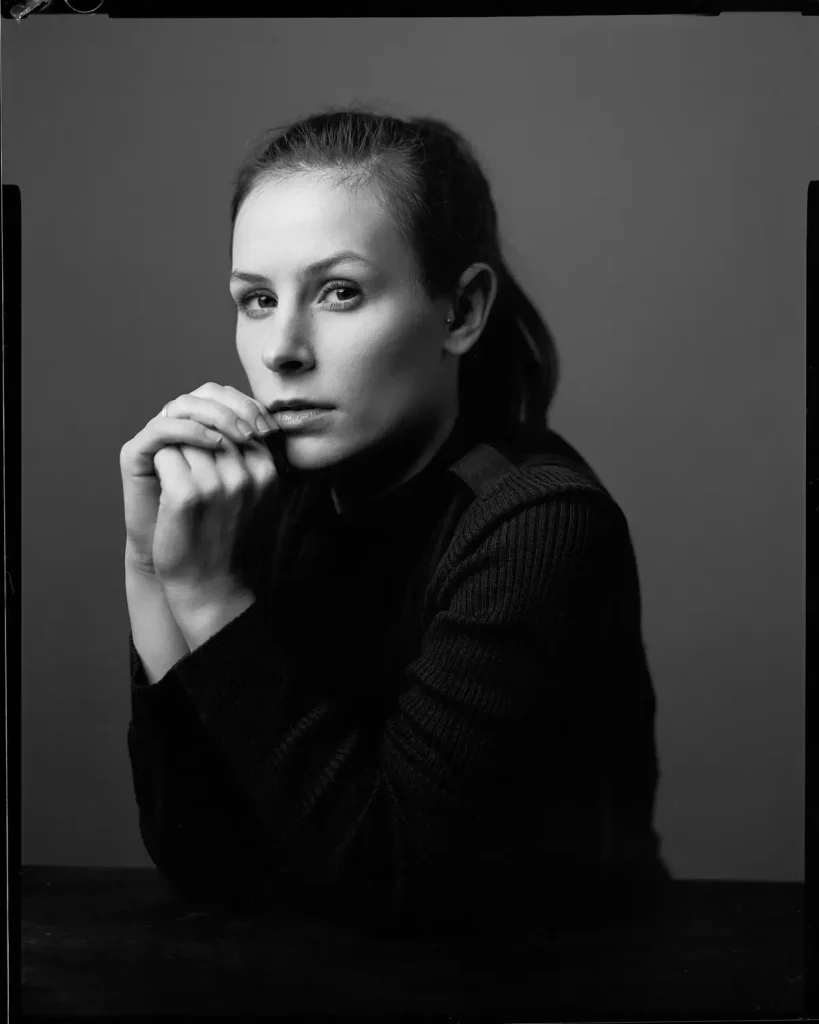
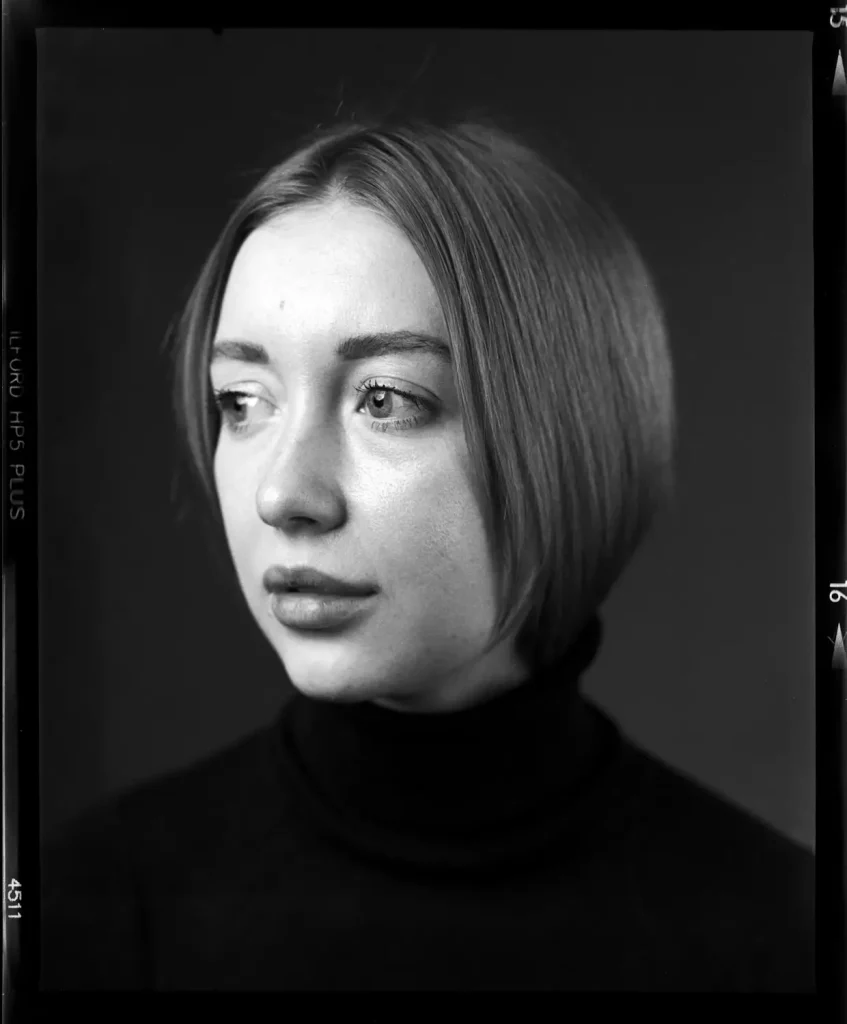
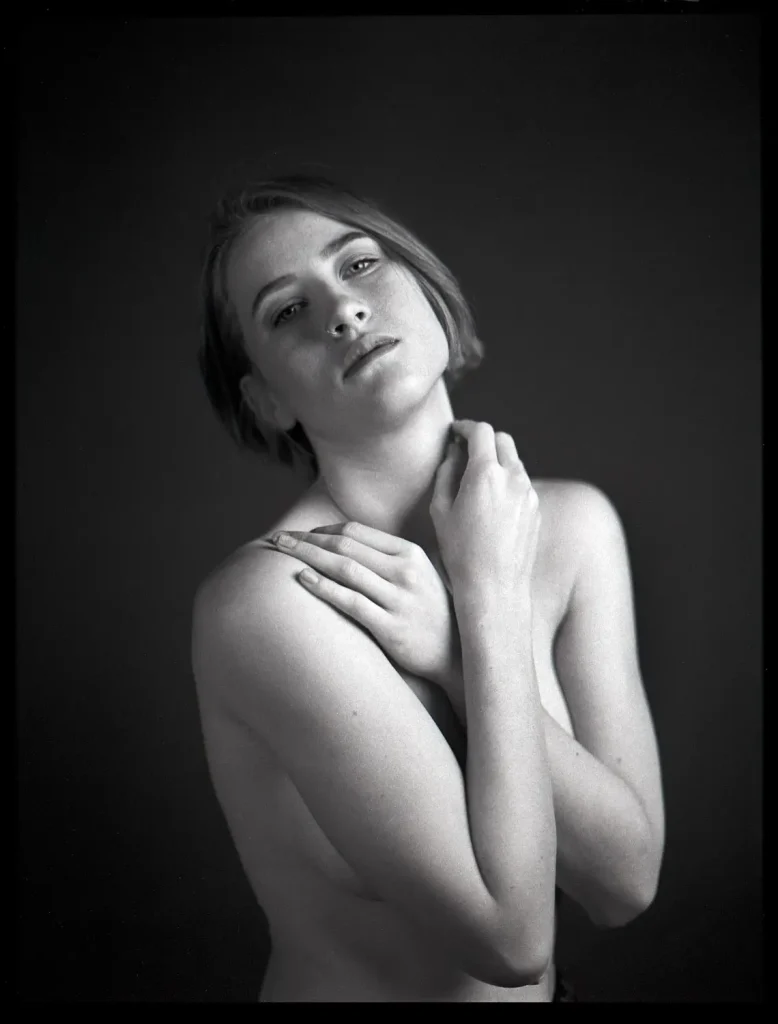
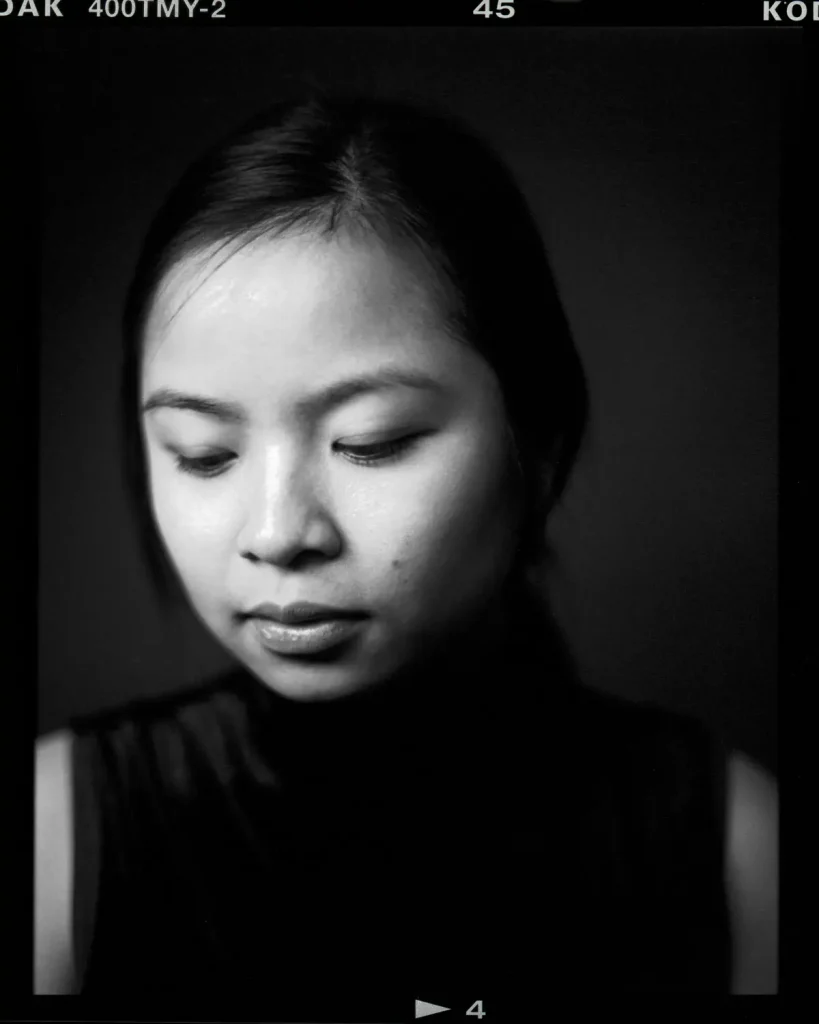
My Studio and Kit
For those interested, my photo studio is located in a classic villa near the Großer Garten (what is the central park) in Dresden, Germany. For me it is the ideal haven for reflection and a source of inspiration and new ideas.
In the studio, I work with several flashes from Elinchrom and continuous light from Godox. For the flashes and permanent lights, I like to use modifiers, such as strip lights or octa boxes, to ensure even light. I create my simple analog black and white portraits with a Mamiya RZ 67 or Mamiya 645, using the brightest lenses, 110mm f/2.8 and 80mm f/1.9 for both cameras.
If I would like more control over the sharpness, depth of field, and resolution, I use a large format 4×5 inch F-Line view camera, with an Arca Swiss system. Arca Swiss is one of the leading cameras for precision mechanics and provides ideal adjustability for sharpness and image composition.
The films that are the most beautiful for portraiture in my eyes are the T-Max100 and T-Max 400 from Kodak. If I need more exposure latitude, I can gladly use Ilford Hp5 +. While shooting 4×5, I prefer Fomapan 100 from the Czech manufacturer for price reasons or T-Max 100 if higher quality should be required.
Thank you for reading.
www.kenwagnerphotography.de | Instagram
Share this post:
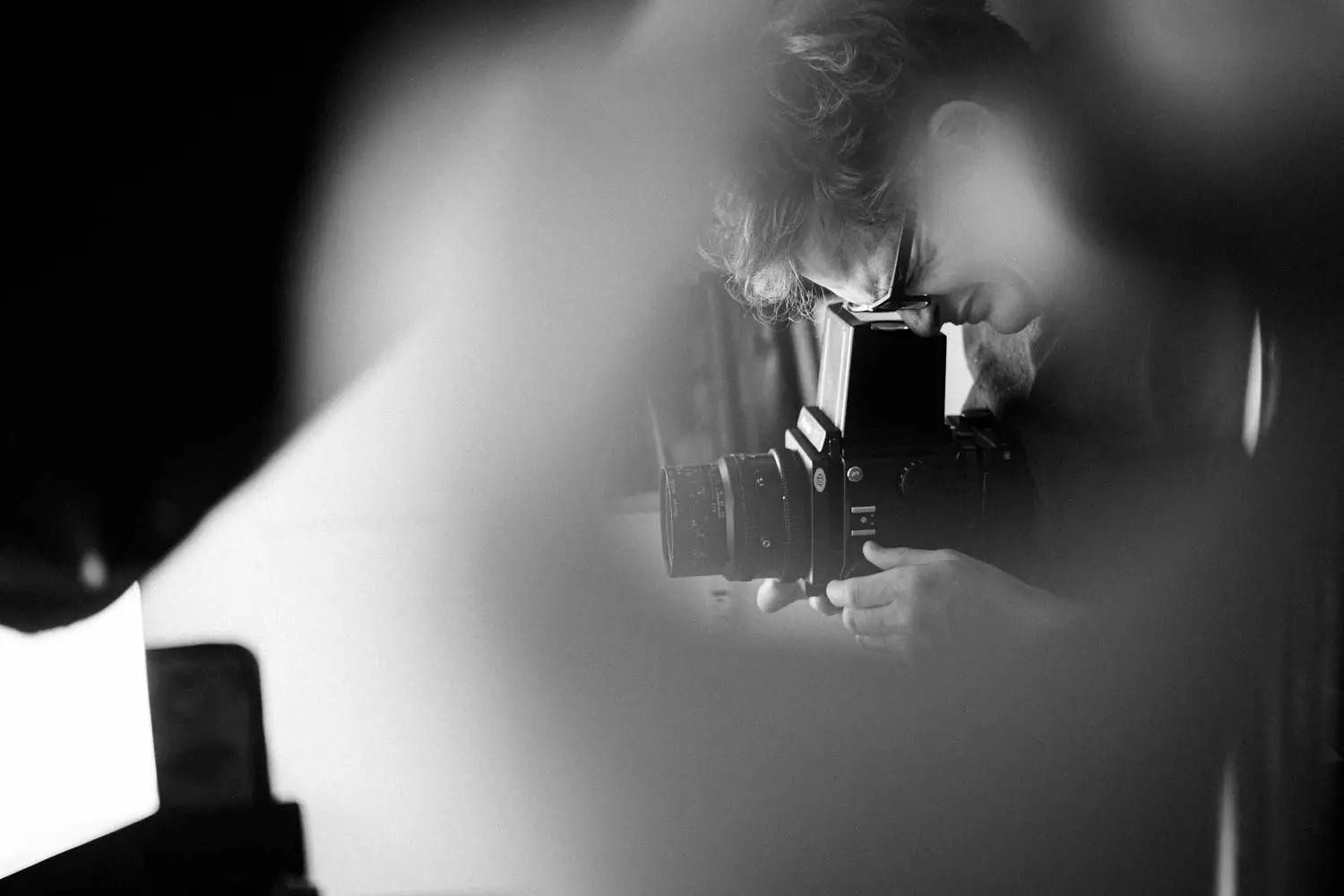








Comments
thorsten wulff on My Approach to Portrait Photography on Film – By Ken Wagner
Comment posted: 14/04/2021
Fernando Martins on My Approach to Portrait Photography on Film – By Ken Wagner
Comment posted: 14/04/2021
David Hamilton on My Approach to Portrait Photography on Film – By Ken Wagner
Comment posted: 14/04/2021
I’ll be taking this with me going forward. Thank you for sharing this.
Dan Smouse on My Approach to Portrait Photography on Film – By Ken Wagner
Comment posted: 14/04/2021
"Every timeless portrait is a work of art, it is a representation of an individual’s personality. In portrait photography, as well as portrait painting, there is an implied agreement that the artist may reveal something about their subject sitting in front of the camera. The aim is to fathom the essence of their personality."
I am not very talented at this but your statement sums up exactly what I think portrait work (both intentional as well as candid) should be about and what I attempt to do when photographing people. Thank you for a great article.
Lachlan on My Approach to Portrait Photography on Film – By Ken Wagner
Comment posted: 15/04/2021
Eric C Jones on My Approach to Portrait Photography on Film – By Ken Wagner
Comment posted: 15/04/2021
There is so much information about cameras, lighting, equipment, Et cetera online and on social media, but so little information about connecting with your subject and capturing their essence.
Finding an attractive model and photographing their beauty is not that difficult, but to find beauty in the ordinary and reflecting a person`s spirt in a photo is truly an art.
It is something I continue to strive to do in my work.
Thanks for sharing
MarkS on My Approach to Portrait Photography on Film – By Ken Wagner
Comment posted: 15/04/2021
Alexei on My Approach to Portrait Photography on Film – By Ken Wagner
Comment posted: 15/04/2021
If you're against such sort of things then why do you do the same?
Michael Amos on My Approach to Portrait Photography on Film – By Ken Wagner
Comment posted: 15/04/2021